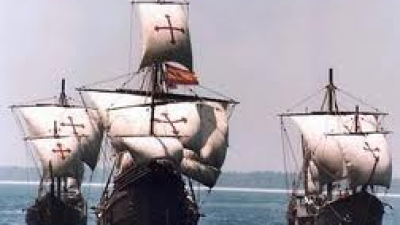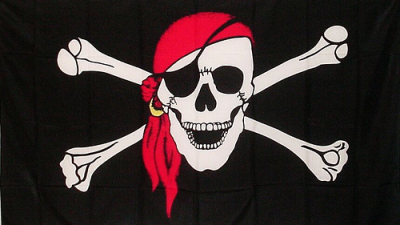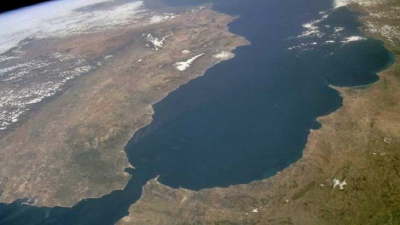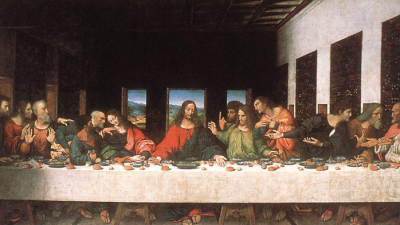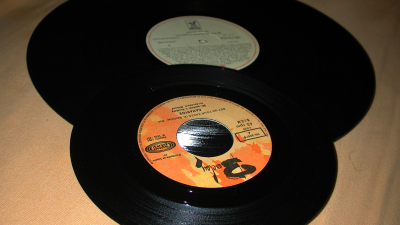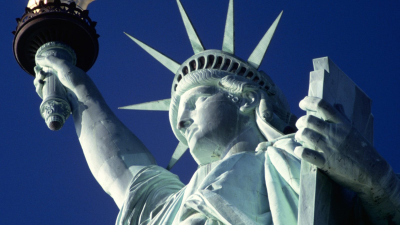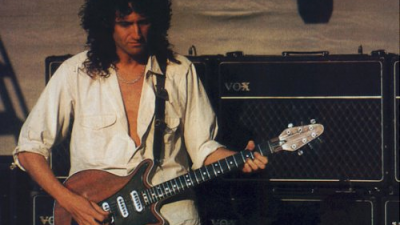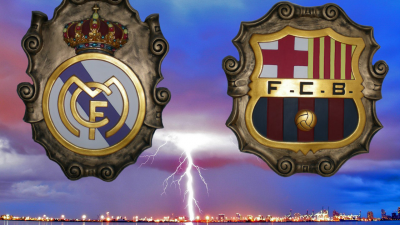Famous and real swords of history
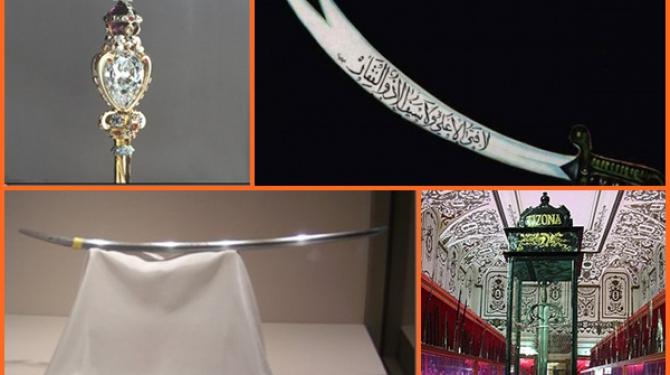
Source: listas.20minutos.es
The sword is the default weapon, the symbol of history, of wars, of monarchs, of courage. Next, a large collection of the world's most famous weapons, weapons that existed and that luckily still exist, already whether in museums, in private collections or stolen in unknown whereabouts.
TOP 20:
The Seven-Forks Sword
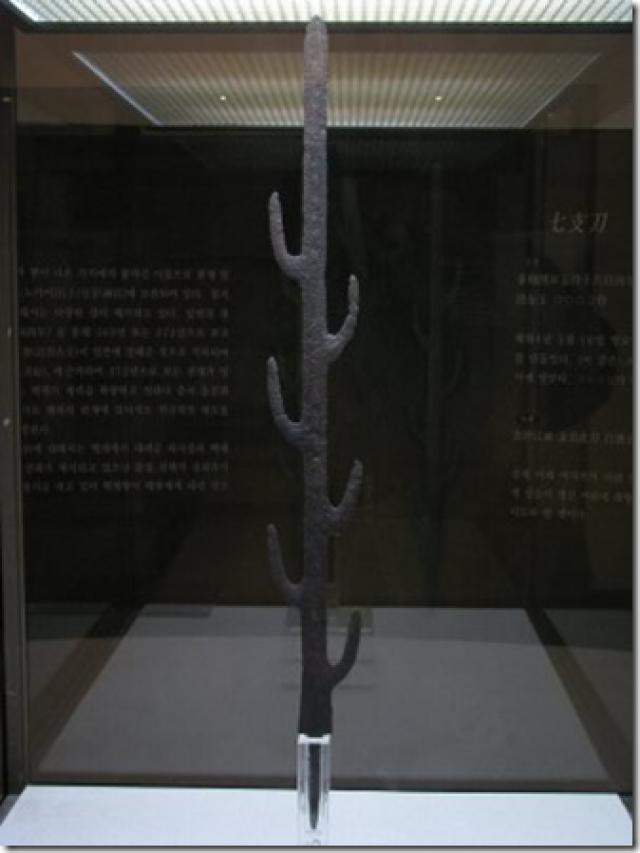
The Baekje dynasty was an ancient kingdom located in southwestern Korea. At its peak in the fourth century, Baekje controlled part of China and most of the west of the Korean Peninsula. They were one of the Three Kingdoms of Korea, along with Goguryeo and Silla. In 372, King Geunchogo of Baekje paid tribute to Jin del Este and commanded the creation of a seven-armed sword and delivered to the new king in praise. The weapon is a 74.9 cm long iron sword with six branch-shaped protrusions along the central blade, which is 65.5 cm. The sword was developed for ceremonial purposes and was not built for battle. It is located in the Isonokami Shrine in Nara Prefecture (Japan) and is not exposed to the public.
TOP 19:
Jeweled Sword of Offering
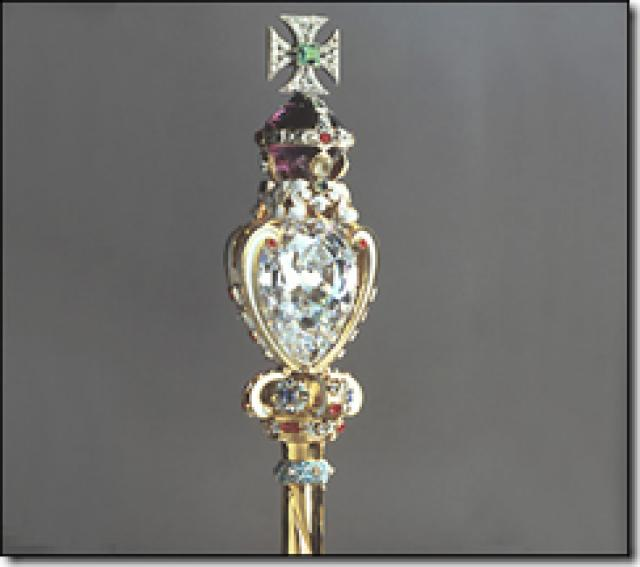
Made for the coronation of George IV. It contains the plant emblems of the territories that make up the United Kingdom. At present, this is the only sword that monarchs use during their coronation. The remaining ones are exposed in front of them during the ceremony.
TOP 18:
Sword of Mercy
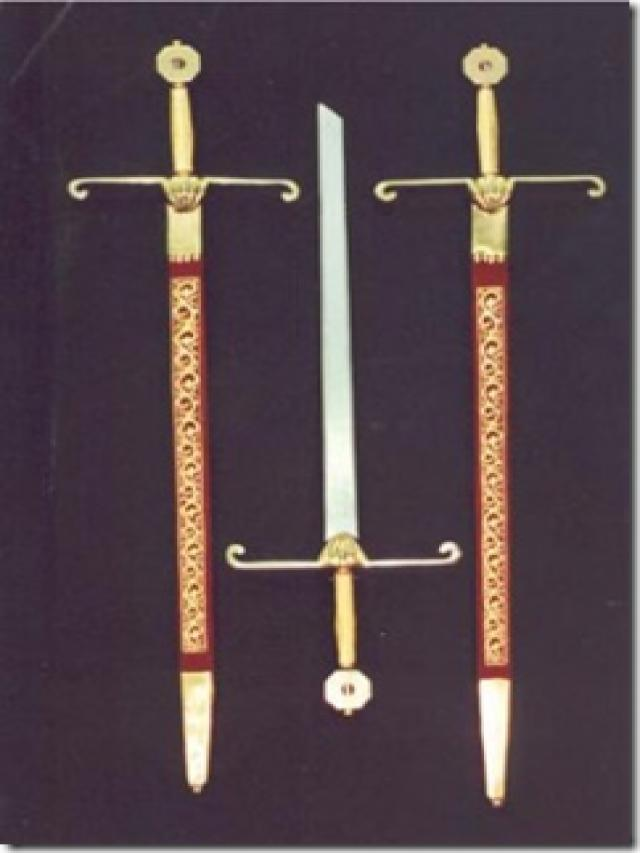
The Sword of Mercy belonged to Edward the Confessor; which was one of the last Anglo-Saxon kings of England before the Norman conquest of 1066. He ruled from 1042 to 1066 and his reign has been characterized by the disorganization and collapse of royal power in England. Shortly after the death of Edward the Confessor, the Normans began to expand in England, led by the famous William the Conqueror. In 1236, the sword was given the name of Curtana and since then it has been used for royal ceremonies. In ancient times it was a privilege to have this sword before the king. It was considered a merciful gesture. The story surrounding the breaking of the weapon is unknown, but mythological history indicates that the tip was broken by an angel to avoid an unfair killing. The Sword of Mercy is part of the Crown Jewels of the United Kingdom and is one of the five swords used during the coronation of a British monarch. The weapon has the privilege in addition to surviving the reign of Oliver Cromwell. Cromwell is known to have ordered the smelting of all the gold objects and relics of the royal house.
TOP 17:
Lobera
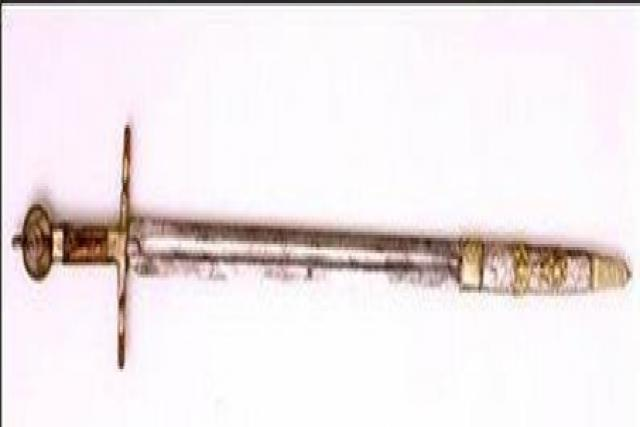
Lobera was the sword of King Ferdinand III the Saint, today preserved as a relic in the Cathedral of Seville, where every year it is taken out in procession to commemorate the reconquest of Seville in 1248 by that king. It was the symbol of power of Ferdinand III, and so it will appear in many engravings, with sword and orb in hand, instead of the traditional scepter. It is a flat blade sword with two edges, measuring 0.854 m long and 0.053 m by the widest part, decreasing, almost insensitively, until it ends in a round point.
TOP 16:
Boabdil sword
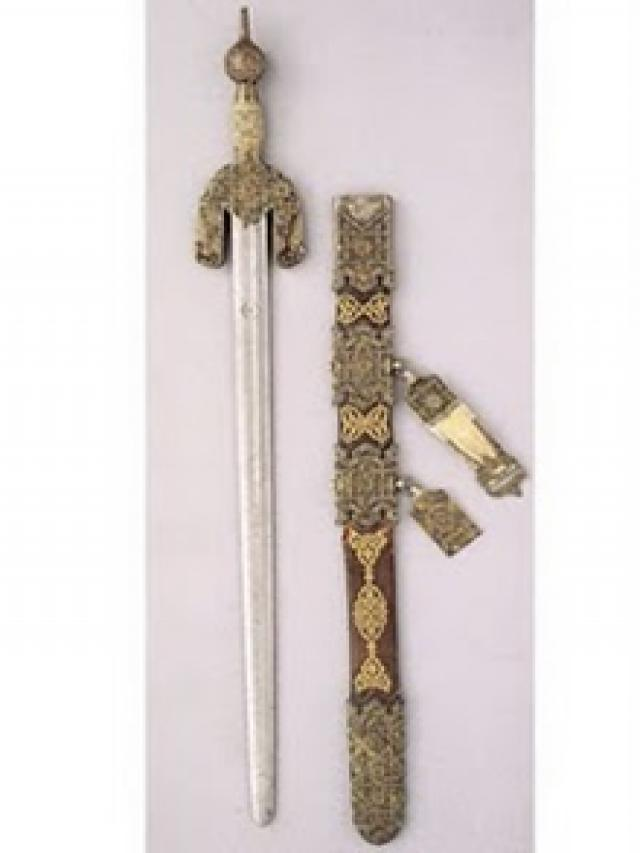
The Sword of Boabdil, was the sword of Abū bdAbd Allāh Muḥammad b. ʿAlī, who was the last king of Granada, known as Muḥammad XI member of the Nasrid dynasty, called by the Christians Boabdil or Boabdil el Chico and popularly known in his time with the nickname "The Wretched". It is a jineta sword, a type of genuinely Nasrid production sword, introduced into the "Muslim" peninsula by the Berber tribe of the Zenetes. It corresponded to a type of straight, double-edged swords with a half-channel, with a bony handle and round knob, with one hand, and whose rounded corners fell towards the blade leaving a minimum of space between them. But without a doubt, its most important feature was the great work and qualities of the materials with which the handles were manufactured.
TOP 15:
The Sword of Peru
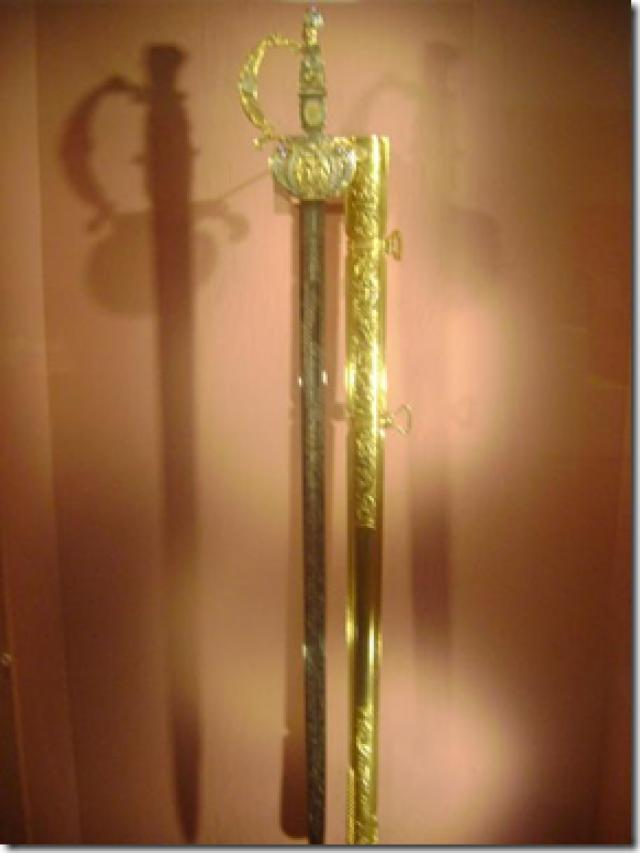
Made in Lima in 1825 and given by the Municipality of this commune to Simón Bolívar in 1825, as a gift for the battles fought in Junín and Ayacucho, which consolidated the independence of the country and America. It is the historical memory of the most notable wars of Independence in South America, for its high value as an artistic and historical jewel. The whole of its sheath is 18K solid gold, in which ornaments of precious stones as well as elegant and varied drawings stand out, among them the Coat of Arms of Peru, the bust of the Genius of Freedom and two truncated pyramids, between others.
TOP 14:
Gou Jian sword
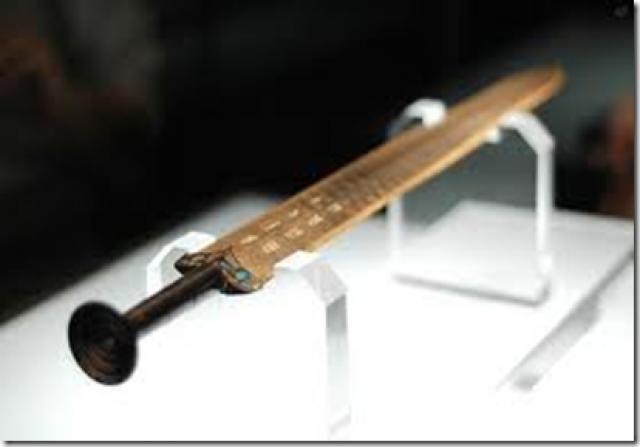
A historical artifact. In the 1960s, this sword of the King of Yue was discovered in a tomb of the Chu Kingdom, which after more than 2,500 years underground still retains its gleam and edge.
TOP 13:
The Snake Sword
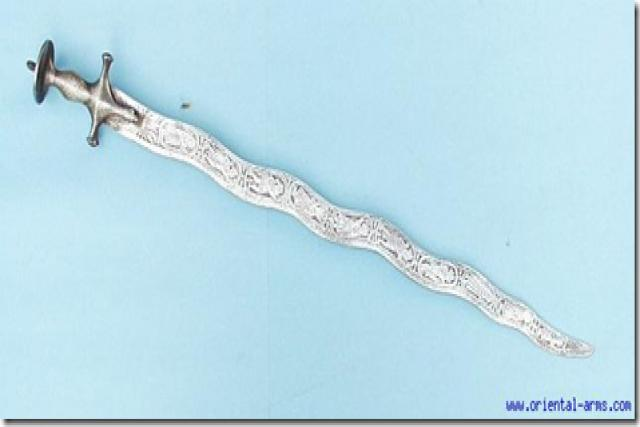
It was managed by the great king Ashoka (Emperor of India who led the Maurya Empire through the Indian subcontinent, between 273 BC and 232 BC).
TOP 12:
Joyous
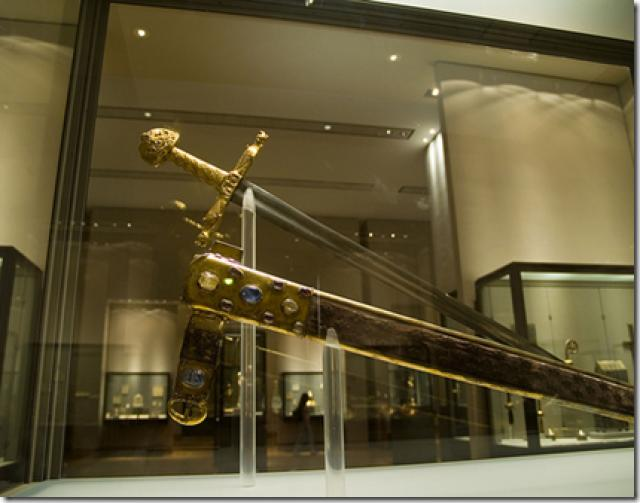
Also known as Joyeuse, Carlomango's sword. He lived around 742. He is one of the greatest rulers in the history of the world and became king of the Franks in 768. In 800 he was appointed emperor of the Romans, a position he held for the rest. of their life. In the Holy Roman Empire he was known as Charles I and was the first emperor of the Holy Empire. During his life he expanded the borders of his kingdom, which covered much of western and central Europe. He is considered the founding father of the French and German monarchies, as well as the father of Europe. Currently, there are two swords attributed to his person. This is a saber that is held in the Schatzkammer Weltliche in Vienna, while the other is in the Louvre in France. The one exhibited in the Louvre claims to be partially built from the original sword. The sword is made of pieces from different centuries, so it can be difficult to identify. This sword appears in many legends and historical documents. Bulfinch described Charlemagne with Joyeuse beheading Corsuble, a Saracen commander, as well as Knight Ogier the Danish. After Charlemagne's death, the sword is said to have been held by the Basilica of Saint-Denis and was later taken to the Louvre.
TOP 11:
Napoleon's sword
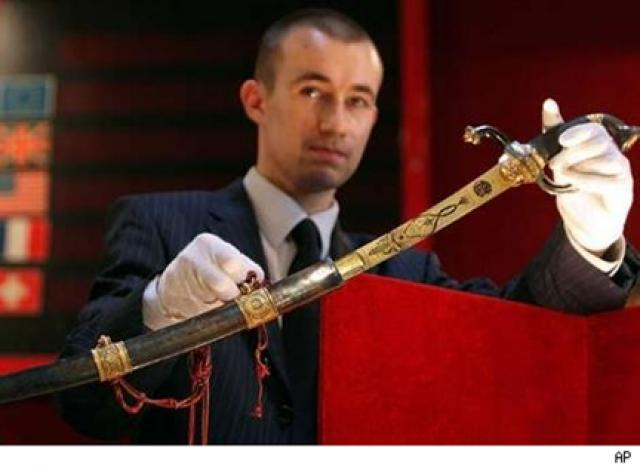
In 1799, Napoleon Bonaparte became the military and political leader of France. Five years later, the French Senate proclaimed him emperor. The decision to invade Russia marked the turning point in Napoleon's fortune. In 1814, the Sixth Coalition invaded France and Napoleon was captured and exiled to the island of Elba. He finally died on the island of Santa Elena. Napoleon is considered a military genius. On the battlefield of Napoleon he carried a gun and a sword. He had a large collection of weapons. In the summer of 2007, a gold-encrusted sword that belonged to Napoleon was auctioned in France for more than $ 6.4 million. In the early 1800s, Napoleon offered it to his brother as a wedding gift. The sword was transmitted from generation to generation, without leaving the Bonaparte family. In 1978, the saber was declared a national treasure in France and the winner of the auction was not identified.
TOP 10:
Zulfiqar
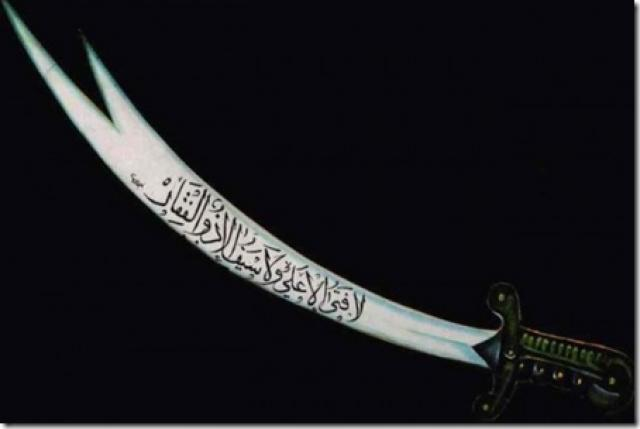
Zulfiqar is the ancient sword of the Islamic leader Ali. This one was familiar to the Prophet Muhammad. He ruled during the Islamic caliphate from 656 to 661. According to some historical accounts, Muhammad gave Zulfiqar to Ali at the battle of Uhud. The sword is a symbol of the Islamic faith and is admired by millions of people. The Zulfiqar scimitar is part of the famous collection called al-Jafr. Al-Jafr is a sacred Shiite legacy. It consists of two paintings containing the most important artifacts from the time of Muhammad and Ali. The collection has been transmitted from generation to generation, with each new magnet that receives it to the death of its predecessor. The content of Al-Jafr is quite impressive, but it is not available to the public. In one section of the book, Islamic norms and the issues surrounding wars are described, including a bag containing Muhammad's armor and weapons. Zulfiqar is said to be among these artifacts.
TOP 9:
The saber of San Martín
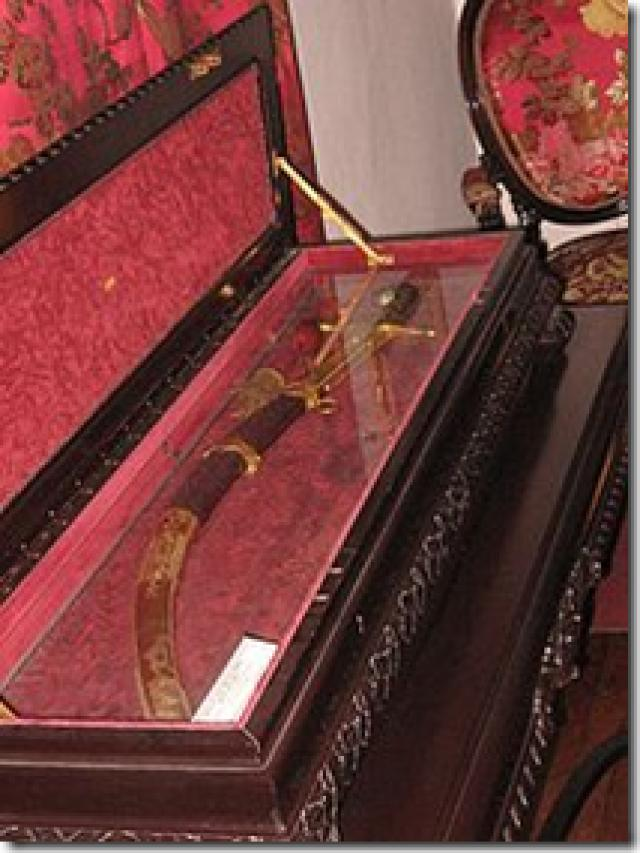
José de San Martín was a famous Argentine general who lived from 1778 to 1850. He was the main leader of the southern part of South America for the struggle of his independence from Spain. San Martín is a hero in South America and the Protector of Peru, who declared himself officially independent on July 28, 1821. In the state of Argentina, the Order of the Liberator General San Martín is the highest decoration that exists One of José de San Martín's most precious possessions was a saber he had bought in London, admiring his curved blade, he felt that the weapon was easy to handle and ideal for battle. In his will, Saint Martin refers to the sword as "The saber that has accompanied me throughout the South American War of Independence." In 1896 the weapon was sent to the National Historical Museum of Buenos Aires, to where it remains today. In the 1960s there were two attempts to steal it, fortunately, without success.
TOP 8:
Tomoyuki Yamashita's Sword
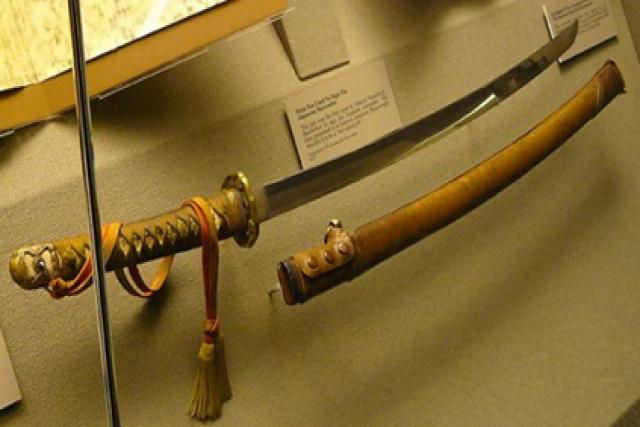
Tomoyuki Yamashita was a general of the Imperial Japanese Army during World War II. It became known during the war after the conquest of the British colonies of Malaysia and Singapore, earning the nickname "The Tiger of Malaysia." After World War II, Yamashita was tried for war crimes related to the Manila Massacre and many other atrocities in the Philippines and Singapore. It was a controversial trial that ended with a death sentence for Tomoyuki Yamashita. The case changed the rules of the United States with regard to the responsibility of command for war crimes, carrying out the creation of a law known as the Yamashita Standard. During his military career, Tomoyuki Yamashita had a sword manufactured by the famous Kanenaga maker Fujiwara between 1640 and 1680. The Samurai sword was handed over by General Yamashita, along with his army, on September 2, 1945. It was taken by the general MacArthur and deposited in the West Point military museum where it remains until today.
TOP 7:
Pre-Iberian Falcata

It was the sword of the first settlers of the Iberian Peninsula, with which they fought the battles of the time. Its original design of the blade adapted to penetrate horizontally, has not been repeated in history, but has a functionality beyond doubt and makes it unique.
TOP 6:
Roman sword (Gladius Romana)
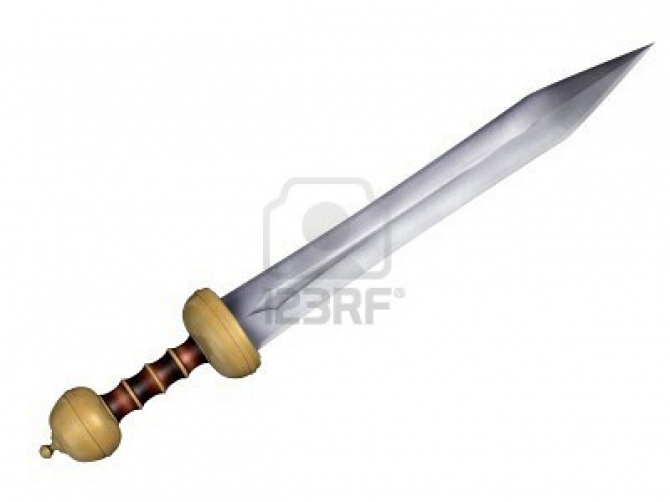
It is the Roman weapon par excellence, it was an ideal sword for close combat and the perfect complement for the phalanges of the fingers. Short, wide and pointed sword designed for direct rapier, causing great damage. The Roman shield complemented the effectiveness of the Roman gladius.
TOP 5:
Sword of Carlos I of Spain and V of Germany
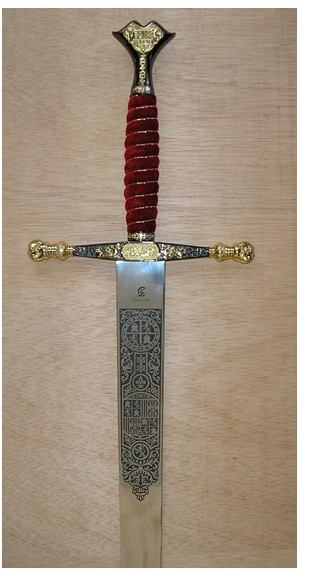
He was known at the time as "The Emperor" since no king ever managed to gather under his mandate such an immense empire. He inherited from his grandparents, the Catholic Monarchs, Spain, America, Naples and Sicily; and from Maximilian from Austria, Flanders and Austria. In 1519 he was crowned "Roman Emperor", going on to rule the greatest kingdom since the time of Charlemagne. His sword is the symbol of his might.
TOP 4:
W. Wallace's Sword
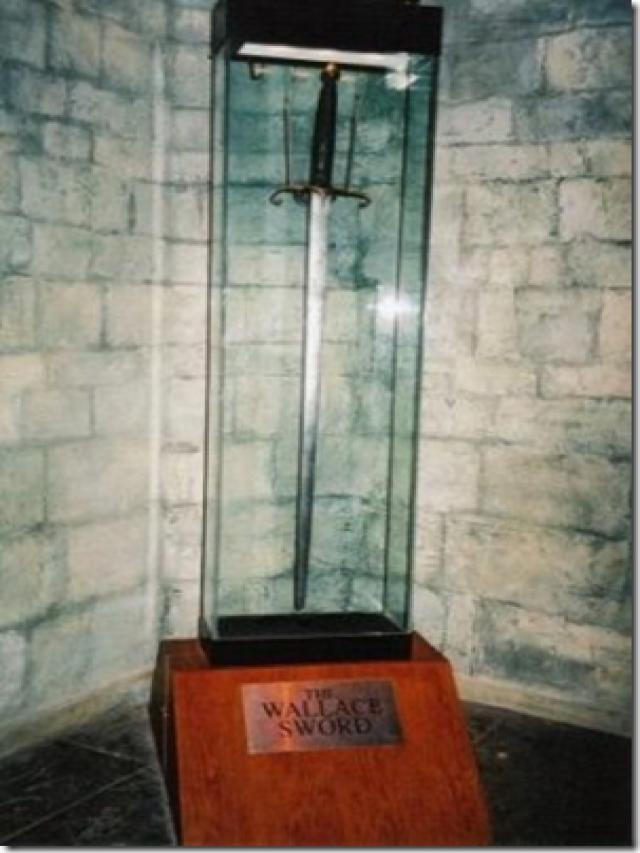
W. Wallace is known for leading the resistance against England during the Scottish independence wars, which were fought in the late 13th and early 14th centuries. During his life, William Wallace was appointed Guardian of Scotland. In 1305, he was captured by King Edward I of England and was executed for treason. Today William Wallace is remembered as a patriot and a national hero in Scotland. His sword is one of the most famous in the world. William Wallace's sword is located at the National Monument in Stirling, Scotland. The axis of the sword measures 132 cm and weighs 2.7 kg. The sword is said to be carried by Wallace in the Battle of the Stirling Bridge in 1297 and the Battle of Falkirk (1298). It is believed that the sword has been modified on several occasions, especially the parts of the handle, and the holster, which is said to have been made of the skin of Hugh Cressingham, an English commander. After the execution of William Wallace, Sir John de Menteith, governor of Dumbarton Castle, received the sword. In 1505, King James IV of Scotland paid the sum of 26 shillings to recover the sword of the national hero.
TOP 3:
Colada Sword of El Cid
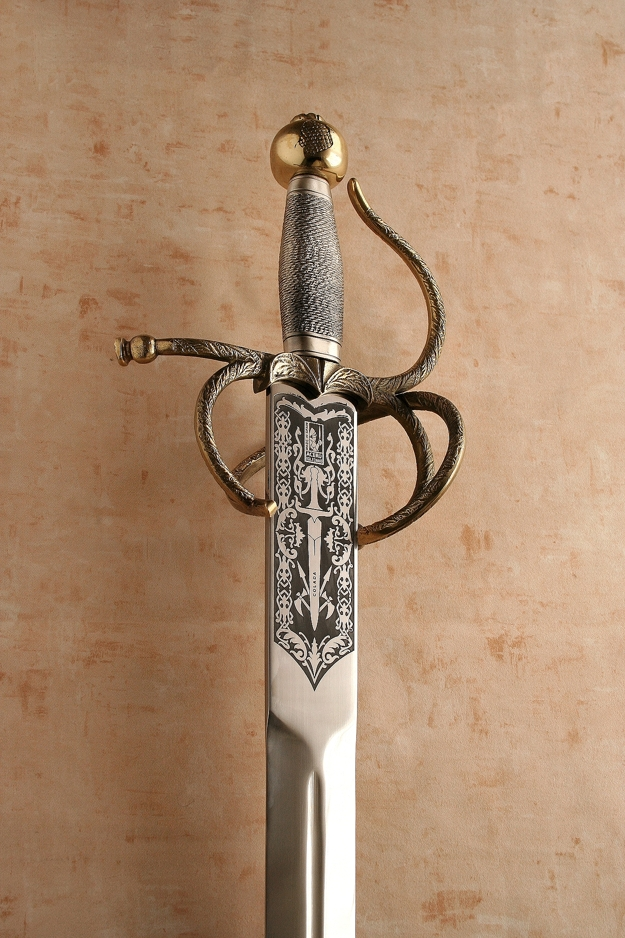
La Colada is one of the two swords, next to the Tizona, that the legendary tradition attributes to Cid. According to Sebastián de Covarrubias, Colada would come from being a sword made of cast steel, although it is not clear what meaning cast steel can have for Covarrubias and how this would apply to the technology of the Middle Ages
TOP 2:
Honjo Masamune
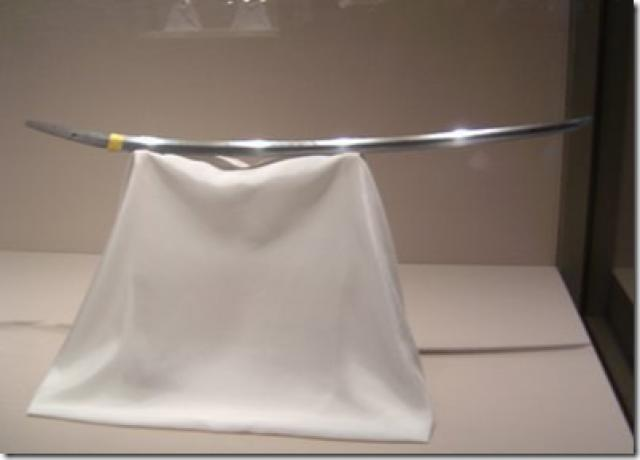
Masamune was a Japanese swordsmith who is considered worldwide as one of the world's great metallurgists. The exact dates in which Masamune lived are unknown, but it is believed that he worked from 1288 to 1328. The pieces manufactured by Masamune have reached the status of legend for their beauty and quality. He rarely signed his pieces, so it can be difficult to identify a sword of his. The most famous of all Masamune swords is called Honjo Masamune. Honjo Masamune represents the shogunate during the Edo period of Japan. The sword is transmitted from one Shogun to another for generations. In 1939, the weapon was designated as a national treasure in Japan, but it was held by the Tokugawa family. The last known owner of Honjo Masamune was Tokugawa Iemasa. Apparently Tokugawa Iemasa gave the weapon and 14 other swords to a police station in Mejiro, Japan, in December 1945. Shortly after, in January 1946, the police gave Mejiro the sergeant swords. Coldy Bimore (US 7th Cavalry). Since then, Honjo Masamune has disappeared and the whereabouts of the sword remain a mystery. Honjo Masamune is one of the most important historical objects to disappear at the end of World War II.
TOP 1:
Tizona
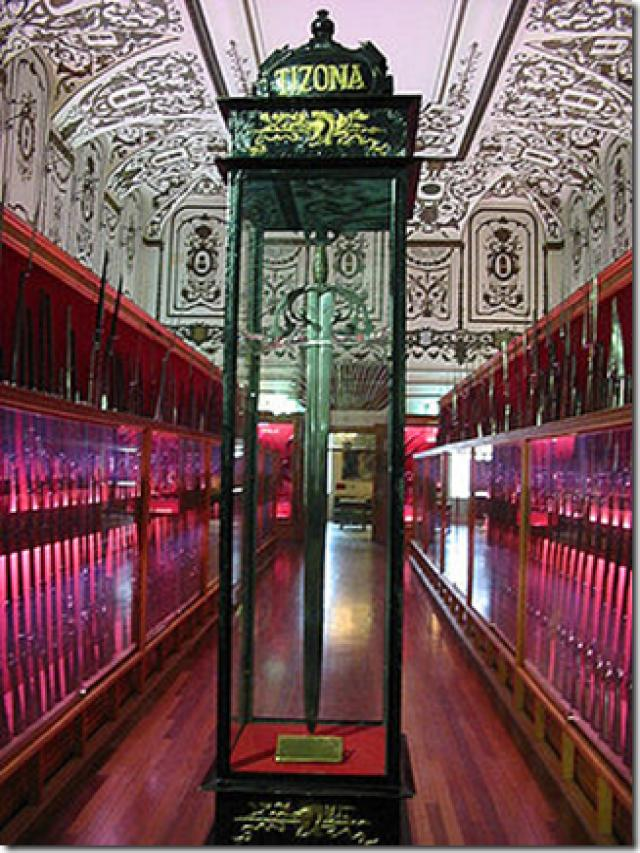
El Cid was born in 1040 in Vivar, a small town about six kilometers north of Burgos, the capital of Castile. The Kingdom of Castile was one of the medieval empires of the Iberian Peninsula. During his life of El Cid he became a leader of military success and diplomat. He was appointed chief general of the army of Alfonso VI and became a Spanish hero. Del Cid is said to use many different swords in his life, but the two most famous are Colada and Tizona. The weapon is one of the most precious relics in Spain and is believed to have been forged in Cordoba, despite the considerable traces of Damascus steel, which was used mostly in the Middle East. It measures 103 cm long and weighs 2.4Kg. It contains two inscriptions, a manufacturing date of 1002 and another citing the Ave Maria. It is currently on display at the Burgos Museum.
More lists

